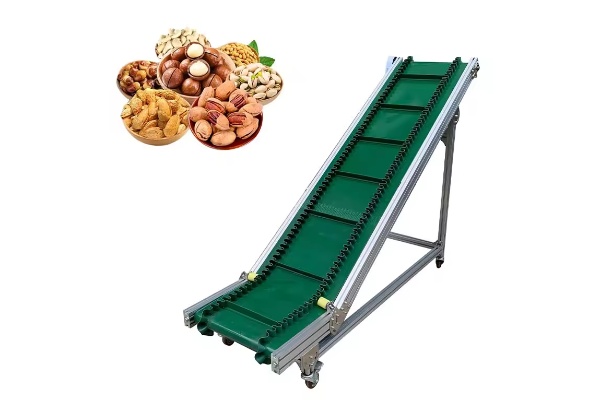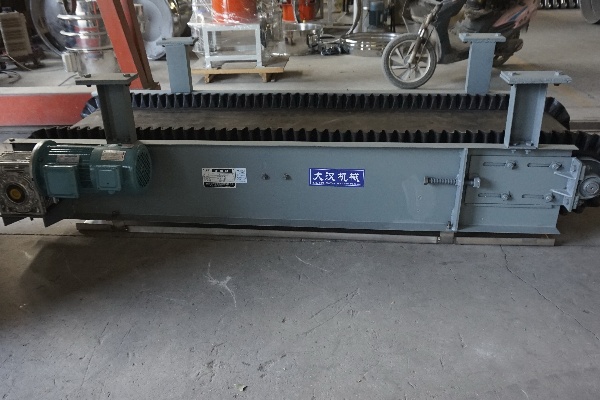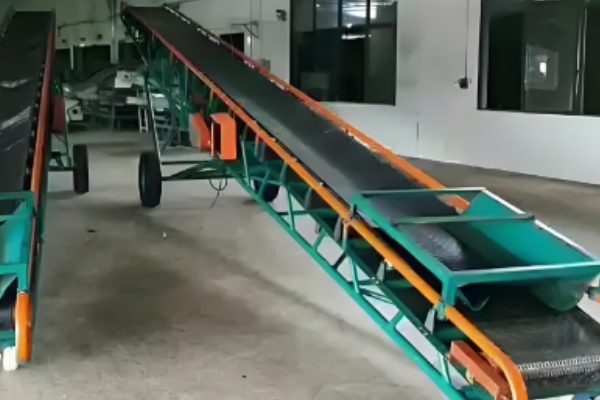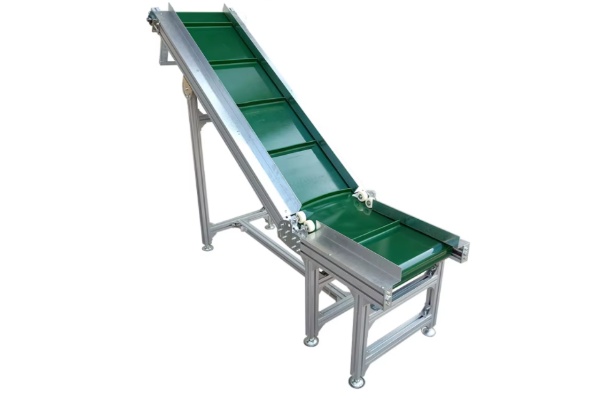What are the different types of nut belt conveyors?
Friday October-31 2025 11:36:40
Nut belt conveyors are indispensable equipment in nut processing production lines. Common types include nut screw conveyors, nut bucket elevators, and Nut belt conveyors. This type of conveying equipment can handle materials in various forms, from shelled raw fruits to shelled nuts and baked finished products, ensuring the continuity of the production process. In actual applications, there are many types of Nut belt conveyors, which are mainly distinguished by their structural design, conveyor belt material, and specific operating requirements. For example, they can be open structures for easy manual operation and cleaning; or they can be closed designs to meet high hygiene standards or dust prevention requirements. In addition, there are special types that can operate at large inclinations for site space restrictions or the need for material height difference transportation.
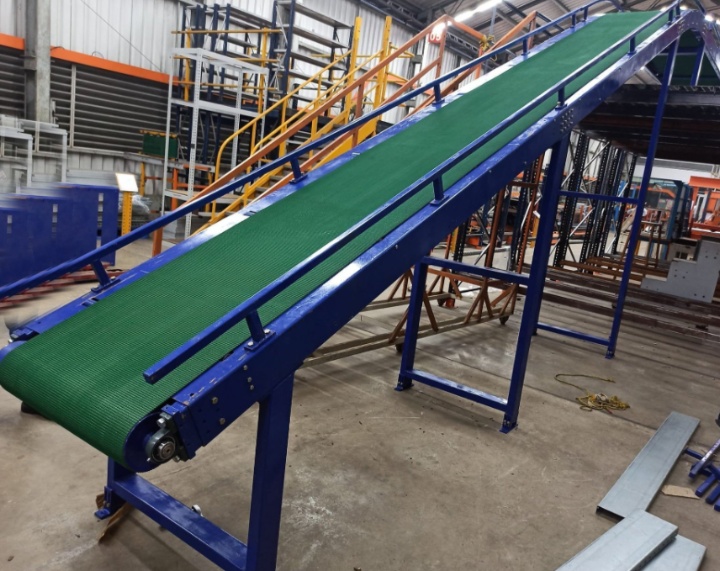
What are the types of Nut belt conveyors?
Common types of Nut conveyors include nut screw conveyors, nut bucket elevators, and Nut belt conveyors. Among them, belt conveyors are the most widely used in nut processing and are favored for their versatility and gentle handling of nuts.
Features of Nut belt conveyors
Conveying capacity and distance: It can achieve a large conveying capacity and a long conveying distance, which is suitable for large-scale and continuous production needs.
Gentle conveying: Through smooth belt movement, the falling, collision and friction of nuts during conveying are minimized, thereby reducing the breakage rate and maintaining product integrity.
Adjustable speed: The conveying speed can be adjusted according to production needs, from slow to high-speed conveying to meet the requirements of different production stages and processing volumes.
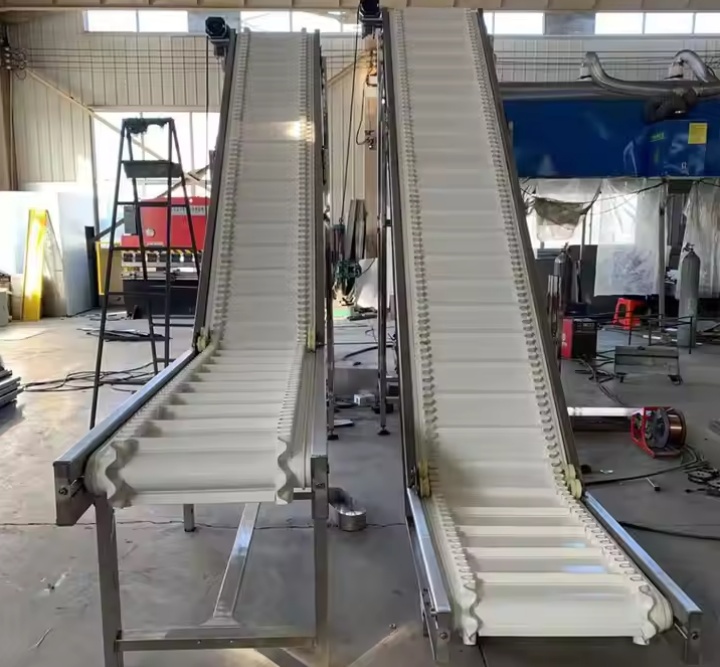
Types of Nut belt conveyors
Features of open belt conveyors: The conveyor belt is directly exposed, the structure is simple, and it is easy to clean and maintain. It is convenient for manual sorting, inspection or removal of defective products. Suitable for medium conveying volume and distance, mostly used for primary sorting, manual screening or before packaging, etc., which require visual inspection. The conveyor belt is often made of food-grade PVC or PU, and the frame is mostly stainless steel or carbon steel sprayed.
Features of closed belt conveyors: The conveyor belt is equipped with a cover or is completely enclosed in a pipe. It can effectively prevent external pollution (dust, foreign matter) and the flying or leakage of nut crumbs to ensure product hygiene and safety. The conveyor belt is mostly food-grade PU, and the frame and cover are usually stainless steel to meet strict food hygiene standards.
Features of high-angle belt conveyors: Designed for conveying nuts at a large inclination angle (usually more than 18°-20°). Conveyor belts are usually equipped with baffles, skirts or corrugated sidewalls to prevent materials from rolling back on steep slopes. Achieve a large vertical lift in a limited space while maintaining a certain conveying volume. The conveyor belt is made of wear-resistant and non-slip materials as needed, and the frame is usually a steel structure.
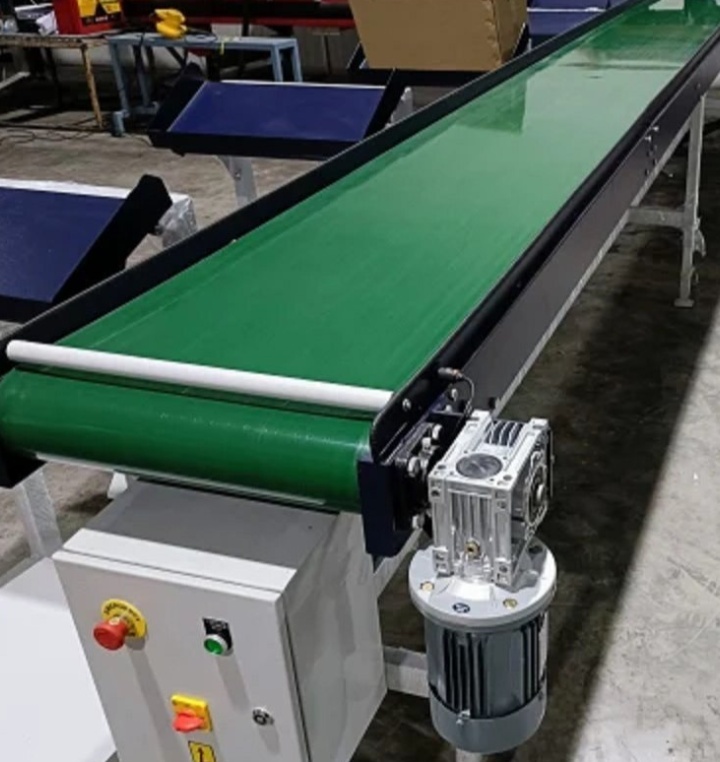
Screw conveyor
Type: For nut conveying, the most common one is the stainless steel shaftless screw conveyor. The shaftless design is particularly suitable for conveying nuts with a certain degree of stickiness, easy entanglement or with debris, avoiding the blockage of materials on the central axis.
Conveying direction: The stainless steel shaftless screw conveyor can achieve horizontal, inclined and even vertical conveying, adapting to the changing production line layout.
Conveying volume and distance: Compared with belt conveyors, its conveying volume is usually smaller, and the conveying distance of a single machine is relatively limited. It is mostly used for short distances or occasions requiring vertical lifting.
Material: It is usually made of stainless steel (such as 304 or 316L) to meet food-grade hygiene requirements and corrosion resistance.
Bucket elevator
Conveying capacity and distance: It can achieve a large vertical lifting height and a certain conveying capacity.
Material: The bucket body is usually made of plastic (food grade PP, HDPE) or stainless steel, and the chain or belt is selected according to the load and hygiene requirements.
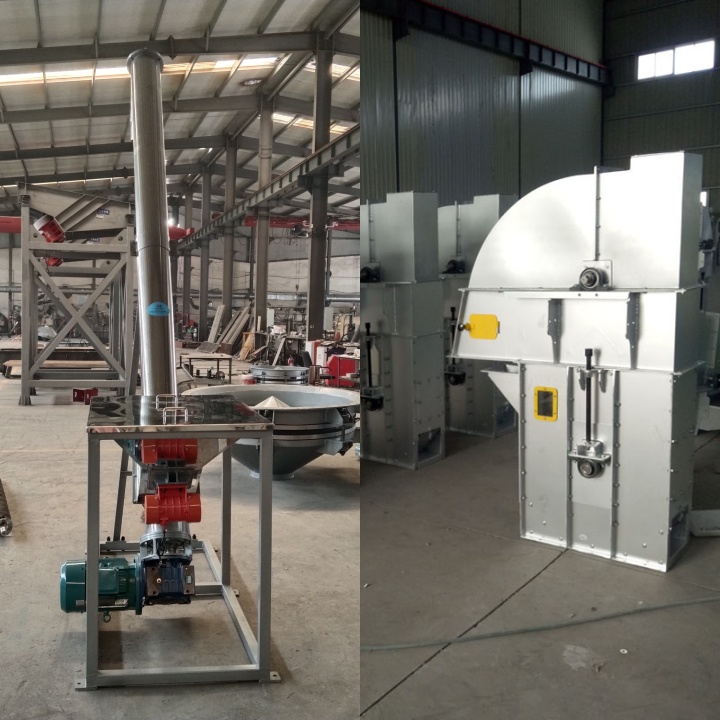
Nut belt conveyors case
Nut belt conveyors play a vital role in the entire nut processing industry chain, and their application covers almost all links from material reception to final product packaging. In the stage of raw material reception and preliminary processing, such as freshly picked shelled almonds, they are quickly unloaded from trucks or containers through wide belt conveyors and directly enter the preliminary cleaning area. Here, they are sent to the vibrating screen, and the belt conveyor ensures continuous and uniform feeding of materials to effectively remove impurities such as soil and branches. Subsequently, another belt conveyor may distribute the preliminarily cleaned almonds to graders of different sizes to achieve classification by specifications. In the processing link, taking walnuts as an example, the walnut kernels and a small amount of broken shells coming out of the sheller will be taken over by the belt conveyor and sent to the air separator, where the light broken shells are removed by airflow. After the roasting process, the high-temperature resistant belt conveyor smoothly conveys the freshly baked and still warm nuts (such as pistachios or cashews) to the cooling section to ensure uniform heat dissipation during the cooling process and prevent local overheating from affecting the quality. The role of the belt conveyor is particularly critical in the quality control and packaging preparation process. The processed nuts will be sent to the color sorter platform by the belt conveyor, and the machine will scan and remove the nuts with inconsistent colors or defects at high speed. After that, the same belt may continue to send qualified nuts to the metal detector for foreign body detection to ensure food safety. Before the multi-head scale, the belt conveyor smoothly feeds the nuts into the scale bucket at a controllable speed to achieve accurate metering and provide a continuous and stable material flow for the subsequent automatic packaging machine. Finally, in the finished product delivery and outbound link, Nut belt conveyors complete the final logistics task. For example, bagged or boxed packaged nuts will be sent from the packaging line to the carton sealing machine for packaging by the belt conveyor, and then transferred to the palletizing robot area for automatic palletizing, or directly guided to the outbound area of the finished product warehouse to wait for shipment.
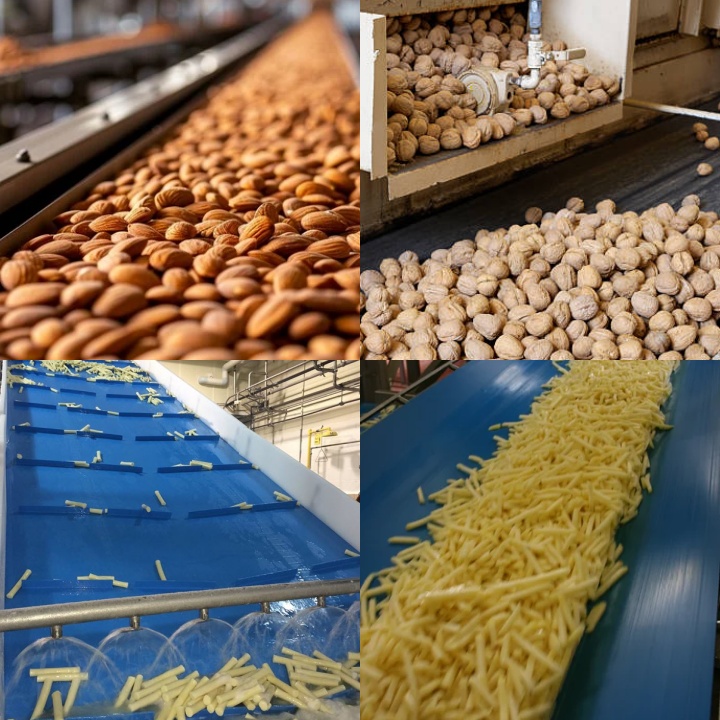
How to choose the type of Nut belt conveyors?
When selecting the type of nut belt conveyors for each stage of material processing, the choice can be made according to process requirements: In the raw material handling stage, wear-resistant and impact-resistant heavy-duty food-grade PVC or rubber belts can be used to handle the heavy load of conveying dried nuts in their shells; after washing and soaking, PU/PVC belts or modular plastic mesh belts with drainage holes should be used to achieve efficient drainage and prevent mold; in the high-temperature baking stage, high-temperature resistant and non-stick Teflon-coated conveyor belts are the first choice; in the seasoning and coating stage, PU/PVC belts with side guards and partitions can be configured to prevent material slippage and ensure uniform coating; finally, in the sorting and packaging stage, food-grade PU or silicone belts with smooth and flat surfaces should be used to provide a stable, low-noise conveying environment for the core finished product and effectively avoid material damage.

The variety of nut belt conveyors is designed to meet the complex and changing material handling needs in the nut processing process. Whether it is to achieve operational convenience through an open design, to ensure the cleanliness of the material through a closed structure, or to solve the problem of vertical space utilization through a large angle design, each type corresponds to a specific real-world application scenario. In an actual production environment, the choice of which type of nut belt conveyors to choose is usually based on a comprehensive consideration of material characteristics, processing requirements, environmental conditions, and site layout.
